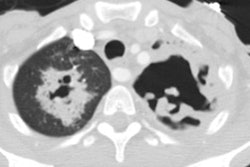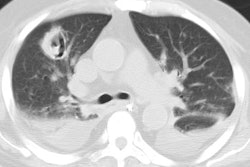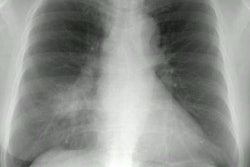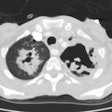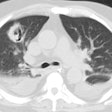Staphylococcus aureus:
Clinical:
Stapylococcal pneumonia is an uncommon cause of community acquired pneumonia [1]- accounting for only 1 to 10% of community acquired pneumonias. The infection commonly follows an episode of influenza or as a nosocomial infection. It may also result from hematogenous dissemination. Complications include abscess formation, empyema, bronchopleural fistula, and pneumatocele formation (especially in children- on fact, the presence of a pneumatocele is virtually diagnostic of staphylococcal pneumonia in a child).X-ray:
In children there is usually a lobar/multilobar consolidation and a pleural effusion is seen in 90% of cases (other pneumonias associated with effusions in children include: H. flu [typically large effusion], TB [associated with adenopathy], and Pseudomonas). Pneumatocele formation is a characteristic finding in 40-60% of cases and typically develop within the first few days following infection. Although pneumatoceles may persist for some time following resolution of the infection, they almost always resolve spontaneously.In adults there is usually a bilateral patchy bronchopneumonia. Pleural effusion occurs in 30-50% of patients with approximately half representing empyema [1]. Lung abscess formation is relatively common (15-75% of cases).
REFERENCES:
(1) Radiol Clin N Am 2005; Tarver RD, et al. Radiology of community-acquired pneumonia. 43: 497-512
